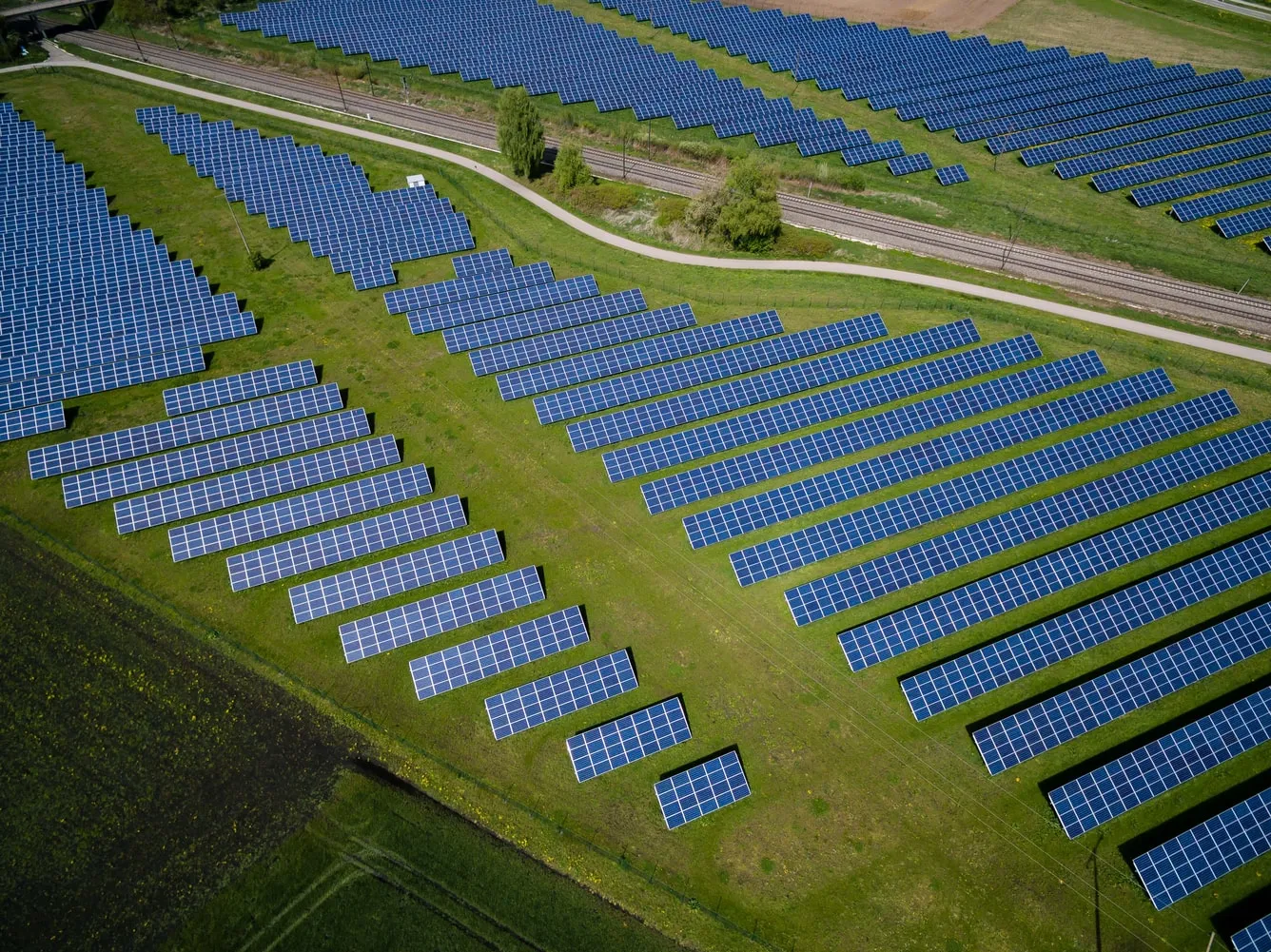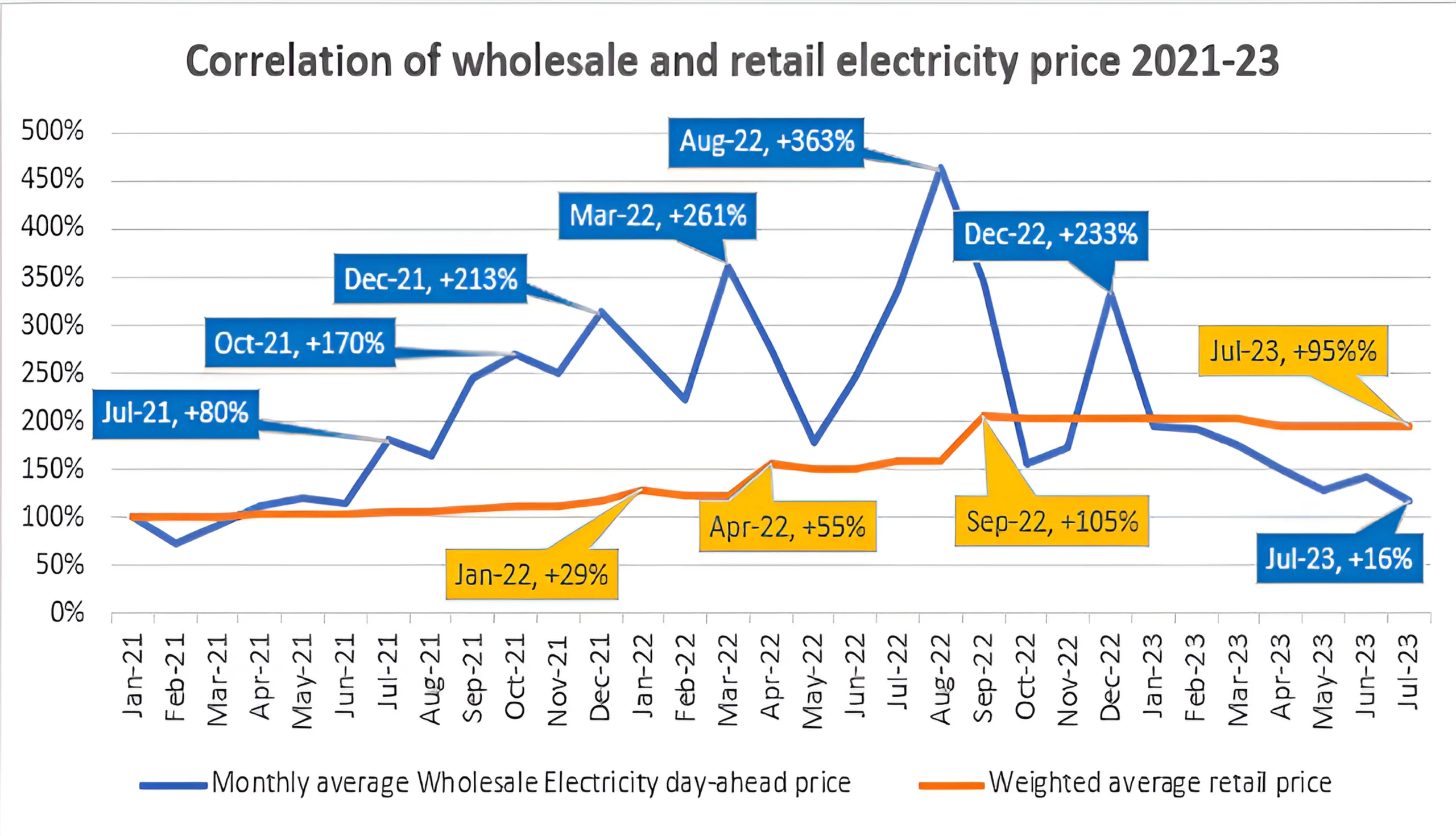The Household Energy Price Index (HEPI) report is a monthly publication which analyses electricity and natural gas prices for customers in 33 capital cities across Europe. Commissioned by the Austrian energy regulator (Energie-Control) and the Hungarian Energy and Public Utility Regulatory Authority (MEKH), this report, produced by VaasaETT, aims to provide up-to-date price comparisons with consistent reporting methodology.
The report shows the end-user price of electricity on the 1st of each month. For February, Dublin emerged as being the most expensive city for electricity in Europe, excluding subsidies, with the residential electricity price including taxes of €41.35cent/kWh. This is 1.49cent/kwh more expensive than London and surpasses the EU27 average of 24.85cent/kwh. This data is a snapshot, however a broader perspective reveals a more accurate scenario. Taking data from the HEPI report since September 2021, and not including the energy credits received, Ireland drops to fourth place in Europe behind Great Britain, Denmark, Germany and Italy on price. What is also evident is that European counterparts raised their prices earlier and higher than Irish suppliers, again shielding Irish customers from price volatility by smoothing out rapid increases in price over a longer time period.
It is worth noting that this report is not indicative of the actual cost felt by the customer as it does not factor in electricity credits, or other payments from suppliers to customers. Over the winter period, Irish electricity customers will receive €450 credit on their bills, delivered in three instalments of €150. The first two instalments have been paid, with the third due before the end of April. Factoring in the credit, and assuming it’s contribution to 52% of the electricity bill for the month, based on typical consumption patterns, the cost of electricity is almost halved, at €19.92c/kwh[1]. This may be lower or higher, depending on electricity usage. Similarly, in winter of 2022/2023, Irish electricity customers received €600 in electricity credits, which had a significant impact on the cost felt by customers over this period.
The prices experienced by customers is determined by the wholesale price of electricity. Suppliers hedge on behalf of their customers on the wholesale market to shield them from frequent price fluctuations. This results in the retail market lagging behind the wholesale price. As wholesale prices began to increase over the summer of 2021, peaking in March of 2022, electricity customers were protected from over a three-fold increase in prices through hedging. Since those peaks in 2022, wholesale electricity prices have dropped; however, they remain nearly twice as high as the pre-crisis levels.
On the retail market, suppliers are steadily reducing their prices, with a 3% decrease in retail prices across the market, from January to February and further reductions announced for March and April. The relationship between wholesale prices and retail prices is shown in the graph below.
When the CRU completed a detailed analysis of retail electricity prices in 2022 they found no evidence of excess profits in the retail market sector[2]. During the price crises, four suppliers exited the markets and three suppliers, which supply over 80% of the electricity customers either returned their 2022 profits to customers or were loss-making in the period (Report on Retail Energy Markets, CRU 2023: linked here). This report further states that retail prices are reflective of cost drivers.
Irish wholesale prices for electricity are typically higher than our European counterparts. This is due to our current reliance on gas for electricity production, 48% in 2022, which we import 75% of our gas demand from the UK according to Gas Network Ireland. This high dependency on fossil fuels and a reliance on imports exposes the Irish market to volatility. We also have higher network costs per capita due to our disbursed population.
Acknowledging that Irish prices are higher than other European countries, energy suppliers are committed to helping customers who may be having difficulty with their energy bills. Throughout the crises, suppliers spearheaded a variety of initiatives and in October 2023, energy suppliers relaunched the Energy Engage Code. The Energy Engage Code is a voluntary commitment that sets out how suppliers will help and support customers to manage their energy bills (electricity and gas). It is a coordinated industry-led approach and aims to encourage customers to communicate with their supplier, who will tell you about the supports available. The key principle underpinning the code is a firm commitment by suppliers that they will never disconnect an engaging customer.
[1] Household Energy Price Index Report (February 2024)
[2] CRU Report on Retail Energy Markets (September 2023)


